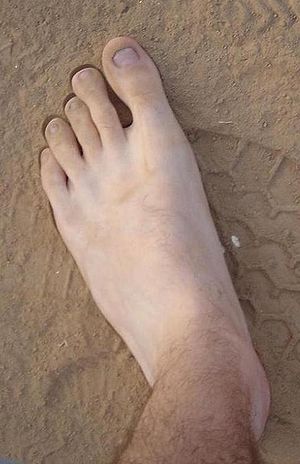 |
| (Photo credit: Wikipedia) |
Athletes usually appreciate referrals to physical therapists. They know that treatment by a therapist will expedite their recovery and restore their function to pre-injury condition more quickly. The back yard sports enthusiast, or adolescent playing high school sports, may not have that luxury. Insurance benefits may be limited to what coverage is provided, so they may need to spend their available dollars more wisely.
From the perspective of a person on the outside, looking in, the relationship between a podiatrist and physical therapist may be somewhat simplistic in its appearance. The doctor might be the equivalent of a head coach, calling the plays from the sidelines, and the physical therapist is the quarterback, provided with the knowledge, necessary to execute the play.
If you have sustained a foot or ankle injury, make no mistake about it, the doctor is calling the shots. It is his knowledge and diagnostic expertise that is getting to the root of the problem. He may then need to refer his patient to a physical therapist who will carry out his prescription and instructions pertaining to physical therapy that provides the quickest path to recovery for the patient. Call Dr. Blaakman at (877) 941-3338 (feet) if you are having a foot or ankle problem that requires treatment. His knowledgeable staff is there to answer any questions you may have to get you on the fastest road to recovery.
Visit Dr. Blaakman’s website, http://www.upstatefootcare.com/ for more information about the services he provides.
References:
http://www.physicaltherapyschdy.com/ASP_Pages/podiatry.asp
http://www.aapsm.org/plantar_fasciitis.html
http://www.podiatrytoday.com/article/6946?page=1




























